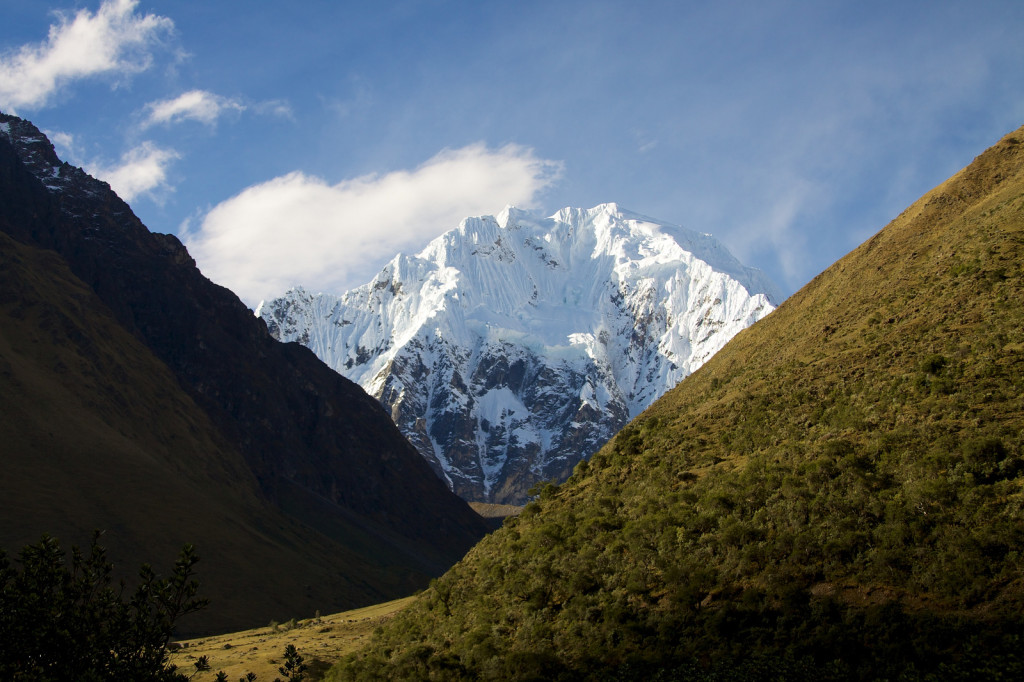
Trekking Nevado Salkantay. Photo © McKay Savage, licensed Creative Commons Attribution.
Peru is one of the world’s top trekking destinations, and the Inca Trail is Peru’s number one trek. Beginning in the high Andes with vistas of sparkling glaciers, the Inca Trail passes a dozen major Inca ruins before plunging into the cloud forest towards Machu Picchu. Apart from the Inca Trail, there are dozens, even hundreds, of incredible treks in Peru’s Andes, which are in the same league for trekking as the European Alps, the Alaska Range, or the Himalaya. Apart from the Cusco area, the other main trekking area in Peru is the Cordillera Blanca, the second-highest mountain range in the world, and its lesser-known but equally dramatic sister range, the Cordillera Huayhuash. For an updated and extended version of this guide by author Ben Westwood, see “A Beginners’ Guide to Trekking Peru“×The Inca Trail is the only trek in Peru where all trekkers must hike with a licensed guide and where there is a limit of 500 people per day on the trail, including trekkers. These recent rules are a result of the Inca Trail’s popularity and the resulting impact that tens of thousands of trekkers are having on its stone trail and the surrounding ecosystem. For the Inca Trail, your only option is to sign up with a licensed agency — and sign up early, as the Inca Trail fills up six months or more ahead of time. As a result of these new rules, Inca Trail prices have increased from as low as US$90 in 2000 to a minimum of US$450 today. Walkin- off-the-street agencies no longer offer lastminute Inca Trail trips. Inca Trail bookings are now done almost exclusively online as the trail’s licensed operators have to confirm all reservations several months in advance. To check the official departure availability, visit the website www.nahui.gob.pe. If a date you want is already booked, it’s still worth checking with agencies as they often have cancellations on certain days.
Any other trek in Peru, including the Salcantay alternative route to Machu Picchu, has a couple of planning options. The easiest, and most expensive, is to sign up with a reputable agency and let it take care of all the details. But you can also custom-design a trip and then hire an agency to take care of logistics such as transport, food, lodging, porters, arrieros, cooks, and certified guides. If you can find a reliable trekking or climbing guide, available for US$80–110 per day, he or she can organize all these details for you for an extra fee. Or you can do it all on your own, which is complicated to negotiate properly but possible if you speak Spanish.
The traditional trekking season in Peru is May– August, but the best weather is June and July. Avoid the last week in July when Peru’s hotels are often booked solid for the Fiestas Patrias celebration around July 28. If you are gunning for a main trekking route, you will encounter fewer people during the months of April, May, September, and October. These “shoulder months” are the best times to trek in Peru as they are outside of the rainiest months (November– March) and also the busiest tourist months (June–August). April and May, and even March if you don’t mind an occasional rain storm, are especially gorgeous as the rainy season has just ended and the highlands are vibrant green.
The motto “you get what you pay for” is especially true when it comes to hiring a trekking agency or guide. Go with an established, well-recommended agency. If you skimp on an agency, you can be guaranteed the agency will either skimp on you (poor food, no bathroom tent), the porters (low wages, no health care), or the environment (pit latrines, no regard for Leave No Trace, or LNT, principles).
Plan for at least 3–4 days to acclimatize before heading out on a trek anywhere in Andean Peru. The Cordillera Blanca’s most popular trek, the four- or five-day trek through the Santa Cruz Valley, involves at least one high pass, Punta Unión, at 4,760 meters. And the Inca Trail has two passes of approximately 4,000 meters.
Excerpted from the Third Edition of Moon Peru.